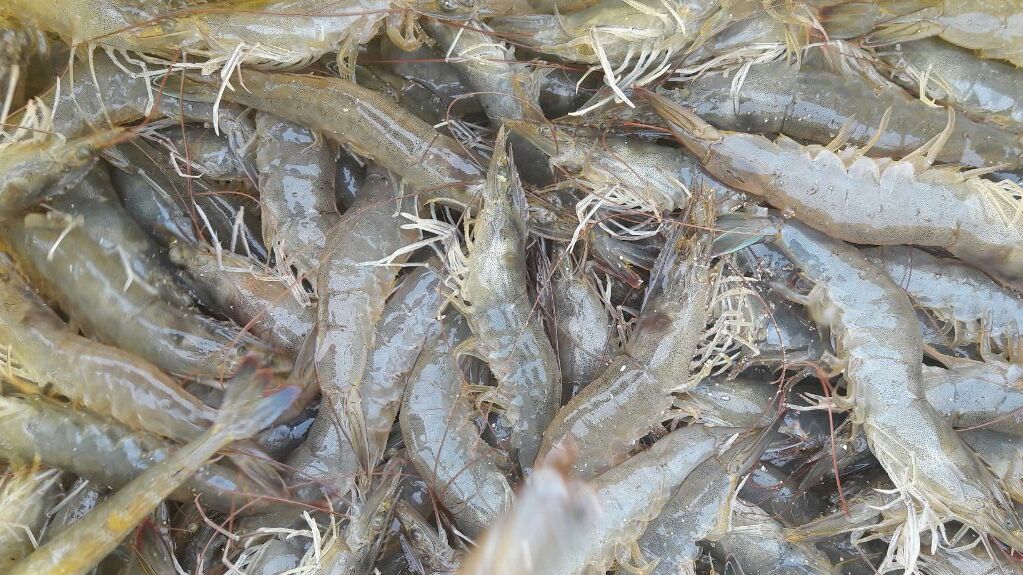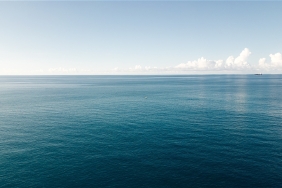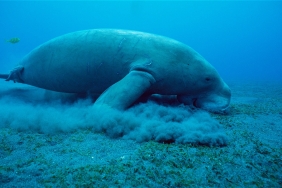POND SCHOOL 7: IMPROVING SHRIMP FARMERS' UNDERSTANDING OF FRY AND POST-HARVEST HANDLING
By: Zulkarnain, Local Facilitator of Aquaculture Improvement Program (AIP) Shrimp, WWF-Indonesia
It has been five months since the 6th Pond School was held by WWF-Indonesia in Tasiwali'e Village, Suppa District, Pinrang Regency, South Sulawesi. This series of non-formal education for shrimp farmers in the Lowita Minapolitan Area, Suppa District, has been started since 2015.
Pond School equips farmers with the basic theory of aquaculture, and becomes a forum for them to exchange information. Increased understanding of shrimp farming will lead to improved management of the ponds and the environment. This is the big mission of Pond School, until its 7th meeting.
A total of 34 participants were present at the Tasiwali'e Village office that day (7/3) to attend the 7th Pond School. 'Good Fry Handling and Post-harvest Shrimp Handling' - that was the theme of this class. Those who were ready to learn that day were tiger shrimp farmers of Phronima Group - assisted by WWF-Indonesia since 2014 - and shrimp farmers of Suppa Sub-district.
In this village that relies on income from shrimp and milkfish ponds, the problem of crop failure due to environmental degradation and disease outbreaks is still a matter of concern. Half-dead farmers try to increase the productivity of tiger shrimp and vannamei shrimp farming in traditional and traditional plus, accompanied by us, WWF-Indonesia facilitators.
As resource persons, Ir. Taufik Sabir (shrimp hatchery entrepreneur, Benur Utama) and Jenny Adiyaningtyas (Marketing Staff, Fish n' Blues (FnB)) shared their knowledge about shrimp fry and post-harvest handling.
"Good quality fry come from good quality parents. The parents must be in good health with complete body organs," said Taufik. He explained about genetic factors as one of the determinants of fry quality.
In addition to genetic factors, the quality of fry also depends on good broodstock and fry rearing practices, including the quality of feed provided. When it comes to feed, the Phronima Group can be proud of its natural food, small crustaceans (were'), which is one of the factors supporting traditional tiger shrimp farming in Tasiwali'e.
One of the characteristics of good fry is disease resistance. As an effort to prevent and early detection of WSSV (White Spot Syndrom Virus), Polymerase Chain Reaction (PCR) testing can be performed on shrimp broodstock.
"Currently, the Pinrang Fisheries Service has provided PCR test kits for free, it's just a matter of whether we want to use them or not," Taufik said. Regarding fry, not to forget, farmers also learned how to harvest and transport fry properly, so that their quality does not decrease.
This knowledge about fry was not the only thing discussed at the Pond School that day. Jenny from sustainable fisheries company Fish n' Blues (FnB) made a presentation that caught the attention of the farmers. FnB is committed to only buying products that have been properly caught or farmed, applying the principles of sustainable fisheries.
"FnB will give a percentage of 2.5% of total shrimp purchases to environmentally friendly farmer groups," said Jenny. "The funds can be used for institutional strengthening, as well as the provision of materials needed to improve product quality," she added.
This clearly motivates farmers to continue to improve their products. So far, one of the sources of FnB shrimp products is the shrimp cultivated by the Phronima Group. Phronima Group's shrimp has implemented the Better Management Practices (BMP) method introduced by WWF-Indonesia since 2014, and is considered to have met the shrimp quality standards.
Jenny also explained the good quality of shrimp - fresh, with shiny black eyes, with skin attached to solid meat, not slimy. The shrimp delivery process must also comply with FnB operational standards, so that the quality does not decrease. I am optimistic that with the Farm School, more Pinrang shrimp labeled Fish n' Blues will reach our tables.





